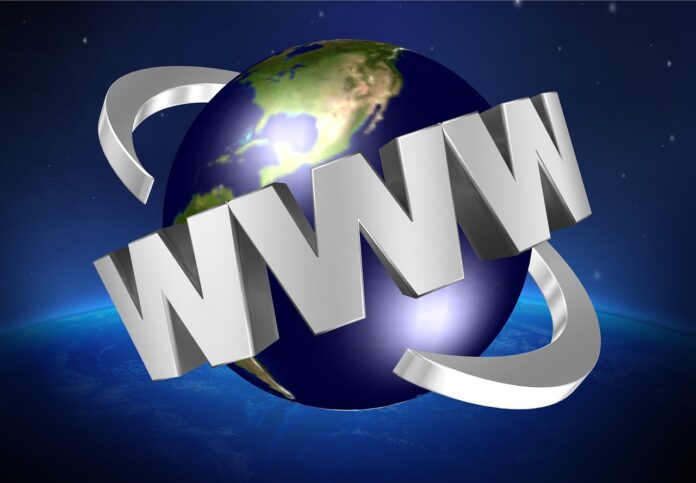It’s true what they say about inventions being born of necessity. The majority of the technology we see and use today stems from that early spark of human necessity. Some create them, while others develop innovative ways to make them available to the entire world. As a result, whether we use social media apps, email, or text messages, we are connected to the rest of the world. Here is a list of some of the most influential creations and people who changed history and gave the expression “it’s a small world” a new meaning.
Sir Tim Berners-Lee’s World Wide Web: In order to connect in the first place, we needed a network of links. While working at CERN, Tim Berners-Lee created just this. The World Wide Web revolutionized technology by linking information and making it available to everyone. The internet is a huge network of interconnected computers. The World Wide Web is a collection of websites that are accessible via this computer network.
Tim Berners-Lee established the World Wide Web in 1989 as a new mechanism for scientists to readily share data from their studies. Although hypertext and the internet were already in use, no one had conceived of using the internet to connect one document directly to another. From its hardware roots to the 5 billion-person network that exists today. It’s a place where, in a much more “virtual” sense, we’re all part of one vast civilization.
Sabeer Bhatia’s Hotmail: The “You’ve Got A Mail” era began, and an Indian had an eye on the industry. When the internet first became available in 1991, email was largely used by universities or for business correspondence. The general public perceived it as a novelty that was still prohibitively expensive for regular use.
Hotmail introduced the first free web-based email service on July 4, 1996. Originally launched in 1996 by Sabeer Bhatia as “HoTMaiL,” it established a direct channel of communication with possibly 20 million American internet users. Marketers recognized an opening and got in with both feet. Not only marketers saw this as a huge opportunity, but so did Bill Gates. So, twenty-five years ago, on December 29, 1997, Bill Gates bought Microsoft a $450 million late Christmas present: a Sunnyvale-based outfit called Hotmail. With the purchase—the largest all-cash Internet startup purchase of its day—Microsoft plunged into the nascent world of web-based email. Hotmail has now transitioned to Outlook, which remains one of the largest email providers in the world.
Sabeer is currently the co-founder and CEO of ShowReel, a video conversation and analytics company that aims to revolutionize entrepreneurship and innovation through the use of short-form video content.
Brian Acton and Jan Koum’s WhatsApp: After quitting their jobs to tour the world, their finances quickly depleted, and they were forced to apply for a job on Facebook, which again did not go as planned. They were disappointed, but their failure inspired them to go on a new life journey: WhatsApp.
“No ads! No games! No gimmicks!” A simple premise allowed WhatsApp to be founded with only 50 employees.
The internet messaging program was developed in response to a real need, and it was successful because it was able to leverage practically every rising trend.
What’s the best part? Even after ten years, the company still maintains its ethos despite generating millions of dollars in income. In February 2014, Facebook paid $19 billion to acquire Whatsapp from the same folks that couldn’t get a job at Facebook.
Mark Zuckerberg’s Facebook (Meta): Hello! It’s a new millennium; let’s make some friends. The thought of the century! And Mark Zuckerberg founded Facebook in 2004, with the name derived from Facebook directories distributed to American university students. Membership was previously limited to Harvard students, but anybody over the age of 13 has been able to use Facebook since 2006. As of July 2022, Facebook had 2.93 billion monthly active users and was rated third among the most frequented websites worldwide. It was the most downloaded mobile app of the decade in 2010.
Facebook can be accessed from devices with Internet connectivity, such as personal computers, tablets, and smartphones. Users can establish a profile after registration by providing information about themselves. They can share text, photographs, and other multimedia with other users who have accepted to be their “friends” or, depending on the privacy settings, openly. Users can also connect directly with one another via Facebook Messenger, join groups of like-minded people, and receive updates about the actions of their Facebook friends and the pages they follow.
Sean Rad’s Tinder: We’ve all come a long way from swiping files to profiles. Tinder, the world’s most famous dating app, was launched by Sean Rad at a hackathon held at the Hatch Labs incubator in West Hollywood in 2012. Users “swipe right” to like or “swipe left” to dislike other users’ profiles, which include their photos, a short bio, and a list of their interests.
By 2014, Tinder was registering about one billion daily “swipes” and reported that users logged into the app on average 11 times a day. In 2015, Tinder was the fifth-highest-grossing mobile app, and by 2019, it was the highest-grossing app. In 2020, Tinder had 6.2 million subscribers and 75 million monthly active users. As of 2021, Tinder has recorded more than 65 billion matches worldwide. Tinder is the definition of how people become more than friends and find something special outside of their mobile screens.

